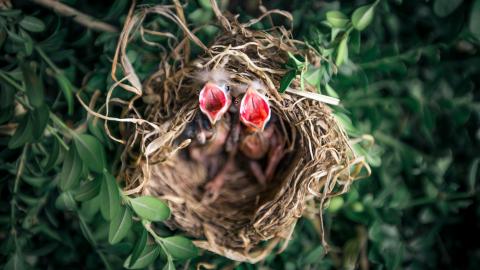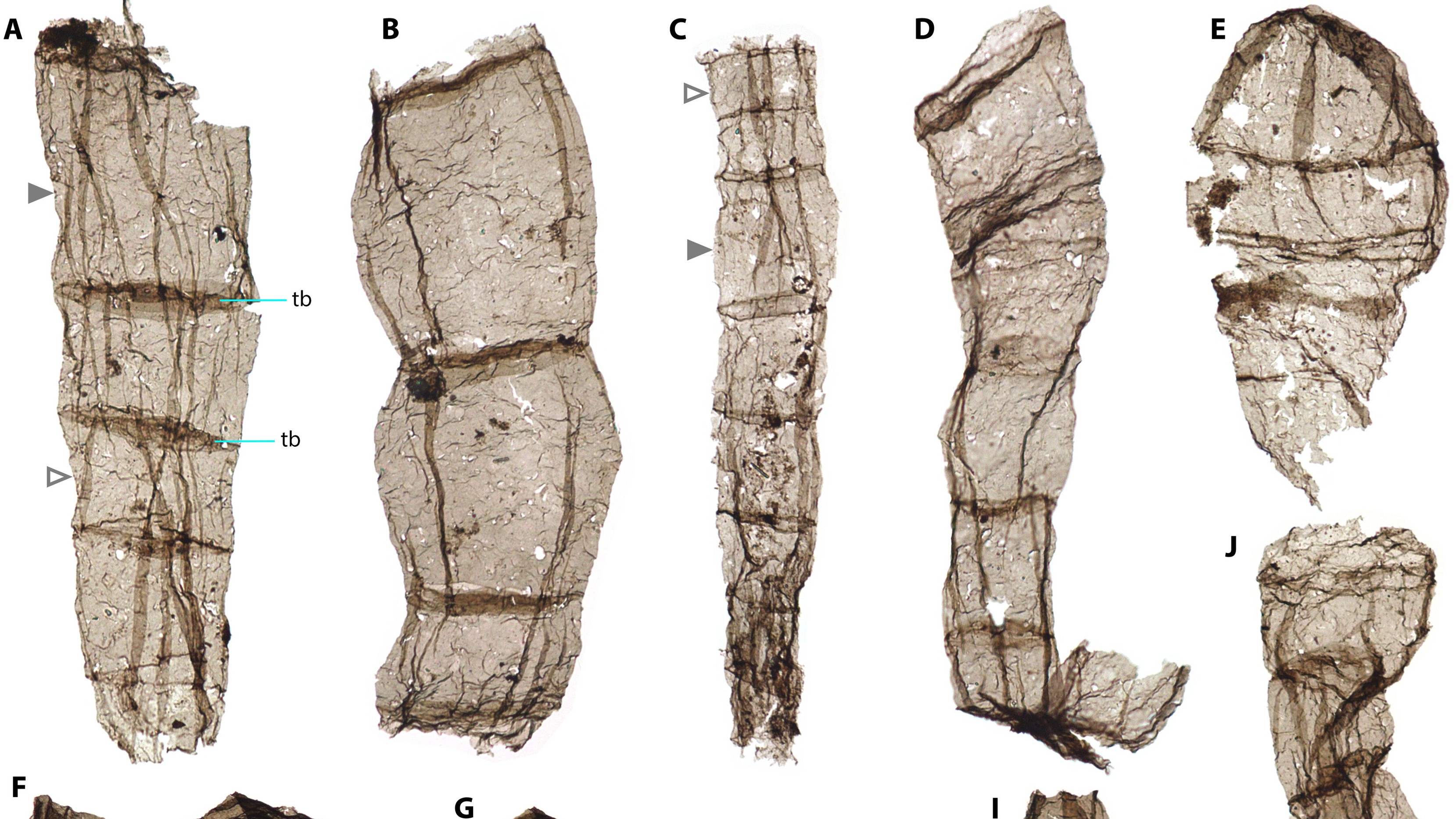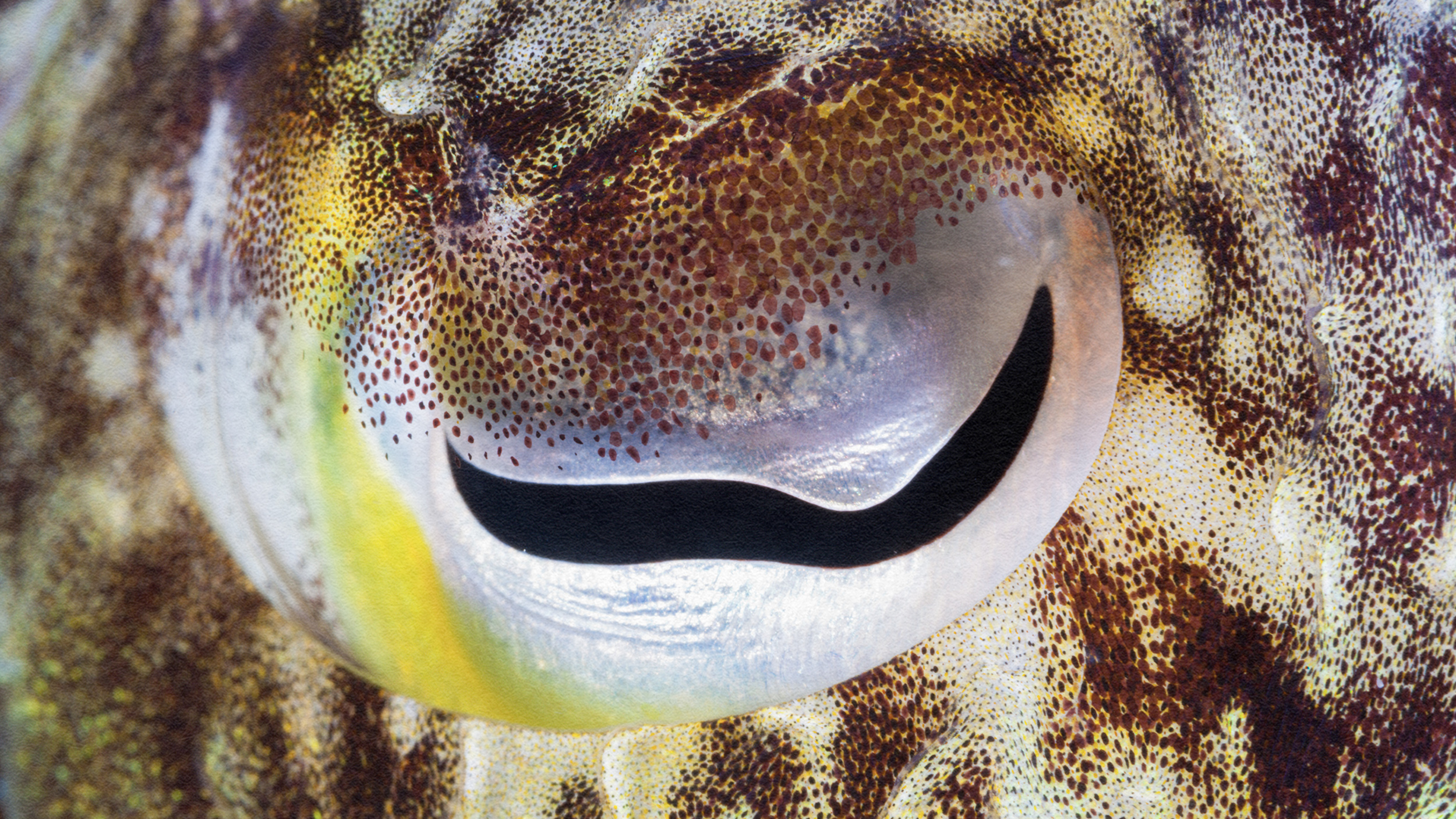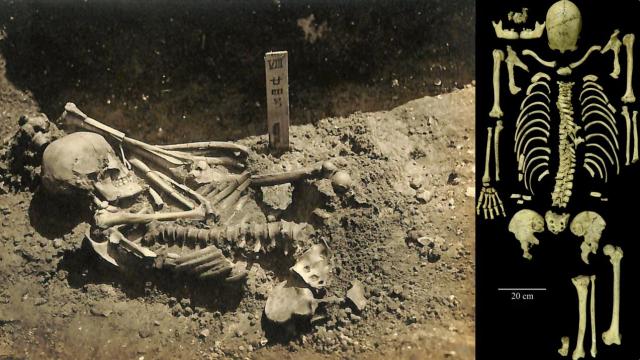David Attenborough, asked a few years ago by journalist Joanna Nikodemska about the animal he finds most interesting, answered after some consideration that he’s most fascinated by a three-year-old human child, whose potential for development and adaptation are simply limitless.
The same journalist and I have been verifying this opinion for over eight years now – indeed, observing the development of a juvenile representative of the Homo sapiens species is a continuous, fascinating adventure.
More r or more K?
It’s a fact that evolutionary success is determined not by the length of adult individuals’ lives, but by the number of their offspring that carry their genes into subsequent generations. More precisely, it’s not about the number of one’s children, but one’s grandchildren: the children need to survive and pass on their genes. Of course, in order to have children, one must beget them, or at least somehow initiate the development of the egg, as it happens in parthenogenetic species, where females don’t bother with guys at all, or only rarely. But I’ve already written before about various original methods of completing that first stage, so let’s focus on what happens later.
Ecology differentiates two strategies of reproduction: ‘r-selection’ and ‘K-selection’. The symbols are taken from a complicated formula illustrating population dynamics developed in 1838, which systematized our thinking about animal success for the rest of the 19th century and for almost all of the 20th century. It was developed by Pierre François Verhulst (1804–1849), and its simplified version is as follows: dN/dt = rN (1 – N/K), where N is the population, r is its maximum growth rate, K is the carrying capacity of the local environment, and dN/dt is the rate of change of the population with time. According to this model, species that engage in r-selection produce as much offspring as quickly as possible, while K-selection involves an investment in quality rather than quantity. So we either have masses of children that we’re not too worried about, hoping that things will work out and some of them will survive; or we have few, but we invest a lot in them and we try to make sure that they do as well as possible. Of course, as is often the case, in nature it’s more of a continuum, where not only different species, but also different individuals from the same species, function somewhere between these extremes and we can only say that one is ‘more r‘ or ‘more K‘.
For example, guppies – small fish from South and Central America, popular with both aquarists and evolutionary biologists – are very flexible in this regard. Researchers have been studying them for years in Trinidadian streams and it turns out that their strategies vary widely depending on the presence of predators, sometimes within the space of a few metres. In the upper reaches of the streams, where rocks make it impossible for bigger fish to get through, guppies have fewer, but larger and better-fed young, so they’re ‘more K‘, and their offspring grow up peacefully in calm waters. Below the rocks (sometimes literally one boulder is all it takes) they choose a strategy more closely aligned with r-selection – their offspring are smaller, but they’re much more numerous, because in the face of the constant risk of being eaten it makes sense to have as many as possible. So, although science is currently leaving this classic model behind, speaking more often about the diversity of survival strategies, my opinion is that – with some reservations – these two letters make it easier for us to describe a complex reality.
Still, no matter how much offspring there is to be, they need to be brought into the world somehow. Here, there are fundamentally two methods. You can lay an egg with a yolk (the evolutionary equivalent of a packed lunch) from which after a while, with more or less assistance from the parents, your kids will hatch; or you can nourish the offspring within your own body and give birth to them ready-made. It’s an easy guess that apart from oviparity and viviparity there’s also a third option: ovoviviparity. It refers to embryos that develop in eggs that hatch while still in the mother’s body, which the young leave later.
All the eggs in one basket?
Let’s start ab ovo. The egg must be encased in something, so that it can protect the embryos at least a little from outside danger. Species that lay their eggs in water usually don’t have to worry that they’ll dry out, so for them a jelly-like membrane is usually enough; it means the contents of the egg stay where they should, instead of sloshing around. But if you live on land, you must – like many insects and arachnids, and all reptiles and birds, as well as mammals such as the platypus and the echidna – invest in something more watertight. The hard shell of a bird’s egg also protects it from at least some predators. For example, the shell of an ostrich egg – incidentally, the largest single cell in the world – is so thick and strong that even lions have trouble breaking it.

Still, whatever the eggs are encased in, they all have a better chance of surviving if someone looks after them. We automatically associate incubating eggs with birds; indeed, they either take care of their clutch themselves or, like cuckoos, frame someone else into doing it. But other animals also provide many examples of parental dedication. Female octopuses spend the last weeks of their lives defending their eggs, tucked away in some underwater nook, oxygenating them and cleansing away algae and parasites. This work uses up all the time and energy they’ve got left after the enormous effort of producing and laying the eggs in a suitable place. When the young octopuses finally hatch, their mum is either already dead or about to die. Although this strategy seems to suit cephalopods, we owe our current position in the world to it – I suspect that if a mother octopus could pass her knowledge and experience to her offspring, Earth would be a very different place. As it is, despite their astonishing intelligence, each octopus must re-invent the wheel. Considering that their intelligence precedes ours by a few million years, I really think that if they could accumulate experience from generation to generation, I’d be writing this text for an eight-legged editor-in-chief, had she even been interested in the opinion of an organism as inferior as a human.
Although the sacrifice of the cephalopod mum is impressive, some invertebrates go further. Perhaps the most extreme form of parental devotion is matriphagy, or the consumption of the mother by her newly-hatched offspring. This phenomenon can be observed in some arachnid species: after laying the eggs, the female starts to dissolve the tissues of her body with digestive juices, so that when the adorable spider babies hatch, their mother is nothing more than an eight-legged chitin container filled with nutritious juice. The tots just need to bite through her skin and they can lap it up. Among insects, apart from the obvious examples of the Hymenoptera (i.e. ants, wasps and bees) and termites, earwigs provide another example of exemplary parental care. The Japanese species Anechura harmandi is the only insect known to science in which the mother also dies before the young hatch, to become their first meal. Even the common earwig is no stranger to motherly sacrifice. The females of these rather unpopular fearless vanquishers of aphids and silverfish frequently gather into groups to care for their clutches together, and then to feed their young and bravely defend them from predators.
The mixed method
Laying eggs has its obvious advantages. If they require no care, you can not only produce many, but also expect that they will spread around the world on their own. But carrying their offspring in their own bodies makes it easier for parents to provide suitable conditions for development. No wonder, then, that some animals (including many species of shark and the common European adder) have chosen the compromise of ovoviviparity during their evolution. In others – like in the viviparous lizard – one or the other method of reproduction dominates depending on environmental conditions. In Southern Europe these lizards, like most lizard species, lay eggs. But in cooler areas the females give birth to their young. Thanks to this flexible strategy, they can live in environments that are inaccessible to many other species, like high up in the mountains and the far north of Europe. It is the only reptile on our continent that also lives beyond the polar circle, although vipers – the northernmost of our snakes – reach almost as far north as that.
Another interesting issue is laying your eggs in someone else’s body, although I’m not sure if that still counts as ovoviviparity. The most banal and drastic example are the many species of parasitoids – animals that exploit their host completely, living in it for a time, before killing it like the Alien from the famous science fiction film. Many wasps paralyse their victim (usually a caterpillar or a spider) and lay their eggs in that living larder; the larvae will later gradually bite their way out of it. But laying eggs into the body of one’s own partner is even more interesting.
This is what happens in the Hippocampus, or the slowly moving fish known as seahorses. After their mating dance and successful consummation of the relationship, the female lays the fertilized eggs into a special pouch on the male’s front. From then on, they will be in his care, so that one day he can give birth to hundreds of miniature seahorses, which he will still take care of after the birth.
But since early childhood, I have been fascinated by another organism. The common Suriname toad – a tailless amphibian (i.e. frog-adjacent) from the northern part of South America with the charming Latin name Pipa pipa – appeared in my life in the form of an illustration in an ancient animal atlas, and it immediately hopped onto the pedestal as one of my favourite species of all times. Just after the female lays the eggs, the male gathers them up and distributes them evenly on her sticky back. Her skin grows spongy, and the eggs sink into it and develop relatively safely; after a time, fully formed little frogs leave her back. It is undoubtedly one of the most interesting births in nature.
The strongest bond
If the young isn’t separated from its mother’s organism by the egg shell, she usually nourishes it via a placenta. This is, of course, the case in a substantial majority of mammals, but not exclusively. The placenta can also be found in some sharks and lizards, but true viviparity has evolved independently at least 150 times and occurs in many species of fish, amphibians, insects and arachnids. One of these unexpectedly caring parents is the infamous tsetse fly: the female flies around for nine months with a single, increasingly large larva in her abdomen, feeding it with a nutritious milky liquid. A more macabre version of feeding one’s young can be observed in some Gymnophiona from the family of common caecilians. Their embryos have special teeth that allow them to feed on the epithelium of the mother’s oviduct. After they’re born, young common caecilians switch over to the female’s outer epithelium and literally flay her, although fortunately she regenerates quickly.
After leaving the mother’s body – one way or another – many young animals still need constant care. Because the physical connection is no longer there, persuading the parents to continue to provide food and shelter requires initiating a psychological bond. The parents must like their newly born or hatched children to keep taking care of them.
And so evolution has equipped young animals with a whole arsenal of signals that leave their carers helpless. In birds, it’s frequently a lurid colouration of the inside of the beak and the area around it, visible when it is fully open. Adult birds find this irresistible and stuff food down the open, begging mouth, even if it doesn’t belong to their children but, for example, to a fish taking advantage of the situation. It is due to our own primitive instincts that most of us also feel tenderness and an urgent need to take care of young animals (or ones that look young). What’s more, the recipients of that care don’t even need to be cute, pretty bunnies – I still remember how touched I was when, as a student, I discovered a wryneck nest in one of the nest boxes I was checking. The chicks of this woodpecker, with their thin, twisty necks and flat heads, look like mould-infested hallucinogenic mushrooms and they’re certainly not pretty, but it works. Their relatively big eyes and squeaky sounds are all it takes. Of course, if the animal meets our criteria of beauty, the effect is even stronger. Cats blatantly exploit this – the charm of their small faces, large eyes and the meowing that emulates the voice of a human baby turns out to be so strong that even my geologist friend is unable to resist them. Although due to his profession he is used to communing with nature through the means of a hammer, he can’t stop himself and constantly regales everyone with photos of his feline charges on social media.
There’s no doubt, however, that in animals such as birds and mammals it’s not only the case of a simple reflex. For some time now, researchers have been claiming more and more boldly that other animals also experience feelings and emotions, like fear, anger, boredom and love. And love for one’s offspring is probably the easiest to observe. It is the simplest explanation for such dramatic examples as the behaviour of a killer whale called Tahlequah who, two years ago, carried the body of her dead child with her for 17 days. Parental love can also be the explanation – because there is no other – for more prosaic and happy examples of behaviour, such as the fact that I’m about to walk my daughter to school, even though I’ve spent all night writing this text.
Translated from the Polish by Marta Dziurosz.
Reprinted with permission of Przekrój. Read the original article.






